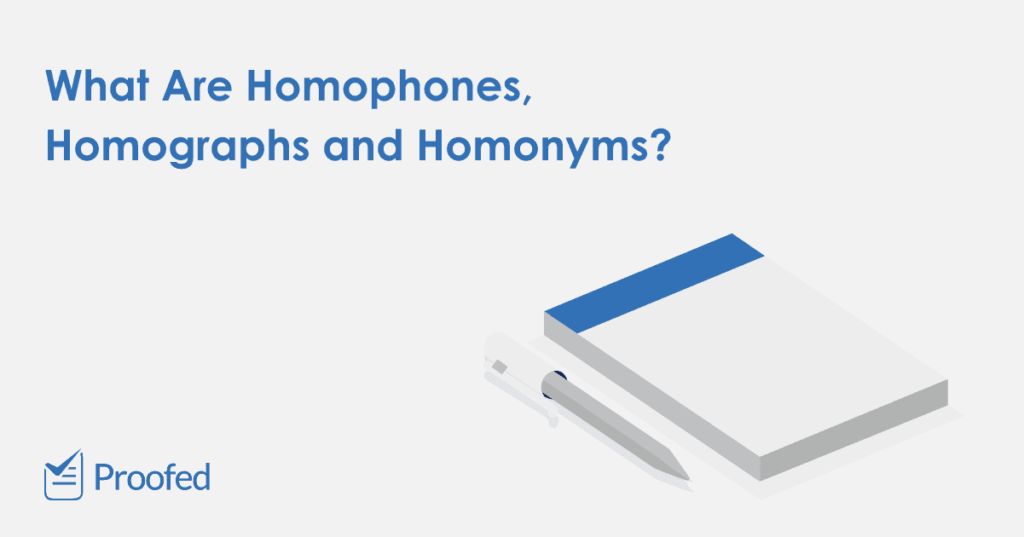Do you know your homophones from your homographs? What are homonyms? And how do you get them right in your work? In this post, we will look at what these three terms mean and how they differ.
Homophones (Words That Sound Alike)
Homophones are pairs or groups of words that are pronounced the same but have different meanings. They might also have different spellings.
You’ll be familiar with the homophones “sea” and “see,” for example. These two words sound the same when spoken, but they have very different meanings. “Sea” is a noun referring to a large body of salt water, and “see” is a verb meaning to witness, view, or understand:
The sea is full of jellyfish at this time of year.
We could see the next village from the top of the hill.
Other well-known homophones include:
- “Hole” (a gap or an empty space) and “whole” (entire or undivided)
- “Bare” (naked or basic) and “bear” (a large mammal)
- “Sight” (vision) and “site” (a location)
- “Made” (created) and “maid” (a female servant)
- “Steal” (take without permission) and “steel” (a metal)
Homographs (Words That Are Spelled the Same)
Homographs are words with the same spelling and different meanings. They do not necessarily sound the same when spoken.
An example of a homograph is “lead.” The word “lead” (pronounced to rhyme with “bed”) is a noun referring to a heavy metal. But “lead” (pronounced to rhyme with “reed”) is a verb meaning “guide, direct, or control”:
The pipes in the old house were made from lead.
He was chosen to lead the team because of his expertise.
Find this useful?
Subscribe to our newsletter and get writing tips from our editors straight to your inbox.
Other examples of homographs include:
- “Desert” (a hot dry region or the act of abandoning something)
- “Bass” (a type of fish or low-frequency sound)
- “Moped” (the past tense of “mope” or a two-wheeled vehicle)
- “Tear” (to rip something or a drop of water from the eye)
- “Row” (to argue or to move a boat with oars)
Homonyms (Words That Overlap)
Broadly, homonyms are words with the same pronunciation or spelling and different meanings. Some people say a homonym must be both a homograph and a homophone or just one of the two, but most dictionaries now say that homonyms can be either a homophone or a homograph.
A homonym that fits the stricter definition is “pen,” which can be a tool used for writing or an animal enclosure. For instance:
He used a pen to write his name.
The pen contained three donkeys and a goat.
These words have identical pronunciations and spellings, making them both homophones and homographs. Luckily, the context clarifies what we mean in these cases (e.g., it would be difficult to fit three donkeys and a goat in a writing implement). But you should still be careful to use homonyms clearly.
Finally, you might be wondering if “homonym” has any connection to “synonym.” But synonyms are words with different spellings and the same or very similar definitions, such as “happy,” “content,” and “cheerful.”
Get Your Homophones, Homographs and Homonyms Right!
If you struggle with homophones, homographs and homonyms, you’re not alone! They can be a source of confusion. Read more on this subject and more commonly confused grammar rules with our ESL Common Writing Errors Guide.
Or if you’d prefer getting an expert proofreader to take a look at your word choice, why not try our services today?



